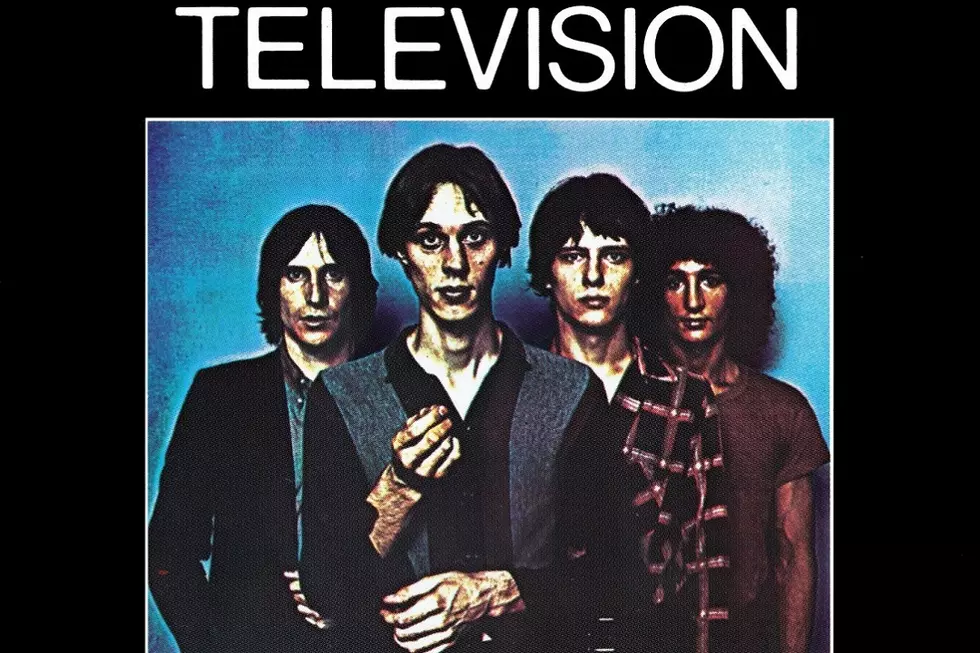
What Indie Radio Can Learn From Its Corporate Counterpart
One of the most thrilling concerts I’ve ever attended: It was 2012, in Albany, New York. A crowd of drunk, stetson and denim clad country music fans packed the city’s Times-Union Center, a mini Madison Square Garden, sweating and pumping their fists. On the stage, emerging from a vale of smoke, Eric Church, the very image of a country music badass in sunglasses, sang “Drink in My Hand.”
For 10,000 country-loving Upstaters — and, if I’m being honest, for me, too — this was the cultural event of the summer. And over the door, the logo of WGNA, the country music station that made it possible, that brought in the band and leased the venue and stoked the audience by playing “Drink in My Hand” on the radio all afternoon.
This is one of the things that corporate radio stations, even in smaller cities like Albany, do really well. They also constitute one of the more local and personal forms of mainstream media. It was Denver’s "butt rock" station, after all, that influenced my sense of humor early on, as I lay in bed in the morning listening to my clock radio, or secretly tuned into to Love Line on my headphones, well after I should have been asleep.
I worked for the company that owns WGNA for four years, and in that time, I learned a lot about how these corporate radio stations support local culture. It’s easy to criticize corporate radio for making the mainstream more bland by playing the same songs over and over, or making it harder for weird or indie musicians to break out. Those are fair criticisms. But there are a few things indie radio can learn from the suits, too.
“Indie radio” is, of course, nebulous, and encompasses a lot of different kinds of institutions. So for ease of explanation, I’ll just say these are stations that don’t rely on advertisers for their well-being; aren’t owned by large media conglomerates; don’t choose their music based on rigid playlists; and aim to be an alternative voice in the community. That definition includes little community stations, like the online-only station I DJ for in Brooklyn; college stations like WNYU, alternative, non-profit stations like WFUV, and free-form, non-college stations like WFMU.
Corporate radio stations are good at developing local personalities -- ranging from the ones you find unbearably annoying to some who can actually be pretty incisive cultural critics, in their own populist context, at least. From a strategic perspective, this is the kind of thing that creates brand loyalty. Come for the Rihanna, stay for the banter about the hellish construction project going on downtown.
I’m hard pressed to think of an indie station, even the more mainstream ones, that has compelling personalities behind the mic, especially the kind that can riff on local things everyone can relate to — the kind of on-air content that makes a station indispensable. As DJs take up social media, and blogging, those connections can become even stronger.
There’s something to be learned from how corporate radio stations make money, too. No one likes listening to 20 minutes of commercials for every 40 minutes of music. But certain radio ads can facilitate a local connection. Ads for local businesses support those businesses and, in turn, the community.
The idea of selling ads on small indie stations might seem far-fetched, given their significantly smaller audiences. But small indie stations could band together to form a partnership that would allow a business to spend the kind of money that will make a difference for them. Big, local organic grocery stores can hawk discounts; Ticketmaster can advertise upcoming concerts.
And if the idea of running 30-second ads sounds contrary to the outlets' appeal, think of all the ways native advertising, a largely unexplored frontier for the corporate stations, might bring in money on an indie station. The indie Artists and Craftsman art supply store in Brooklyn could buy an hour of interviews on Brooklyn Radio with local artists and info on gallery openings; the big Food Co-Op in Park Slope could sponsor a food blogger on the station’s website. In both cases, the sponsorships would support the indie mission of these stations.
Finally, I want indie stations to make themselves more vital. WGNA makes itself vital to a mid-sized city like Albany by bringing a major act into town — few others but a corporate radio station have the firepower to do that. My little indie station isn’t going to have the pull to bring, say, Arcade Fire to the Music Hall of Williamsburg — unless Win and Regine are feeling charitable — but they might find other, creative ways to become vital.
Indie stations need to find their equivalent of the raucous, 10,000-seat country blow-out.
I know, for example, that a pretty sizable segment of the listeners to my little indie station are musicians. Can we be indispensable to them? Can a small station hook up the local alt-country outfit with a new drummer, or bring the singer we watch every Tuesday at the bar into the studio for a live session? Bigger indie stations could consider the traffic-and-weather combo that serves as big corporate stations’ bread and butter, or the event listings that keep readers picking up local alt-weeklies.
Indie stations need to find their equivalent of the raucous, 10,000-seat country blow-out.
Some of these things happen on indie radio, but it’s worth a concerted, strategic effort — the kind that corporate radio stations undertake as a matter of business. For indie stations, it’s a matter of survival.
More From Diffuser.fm









